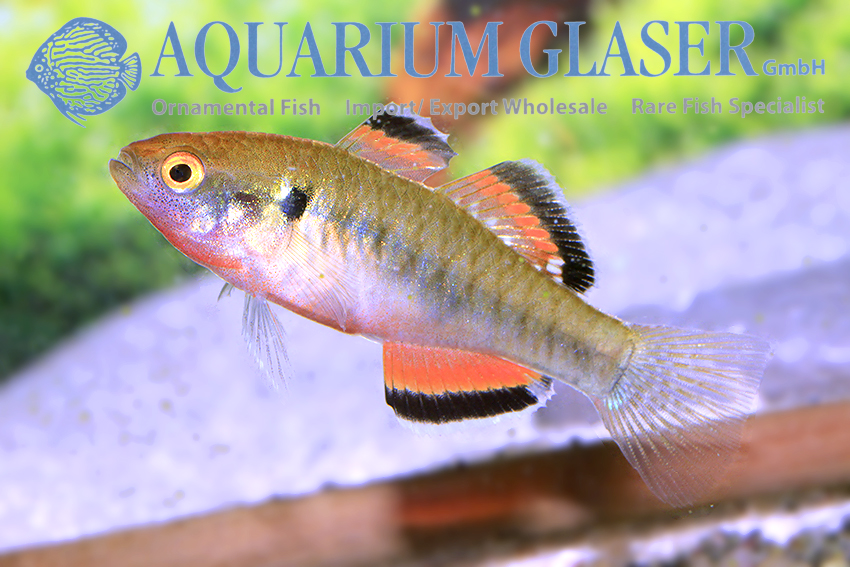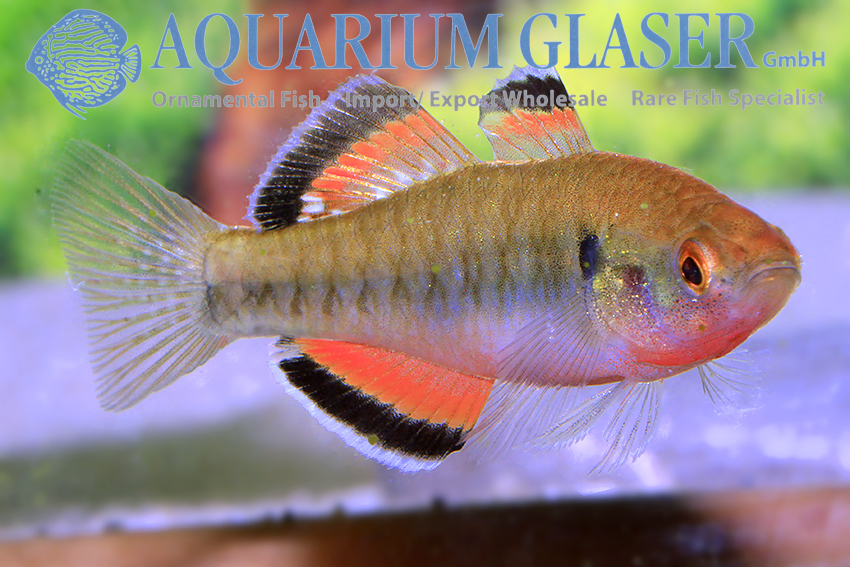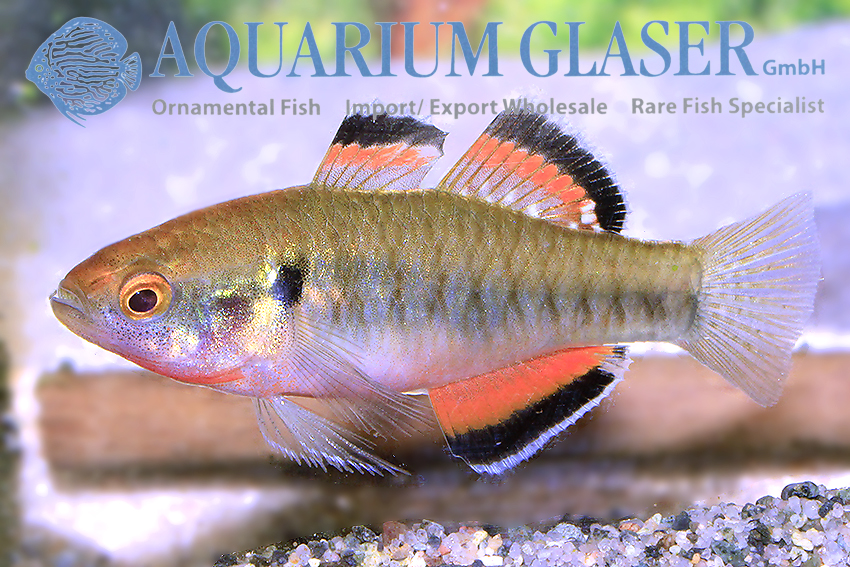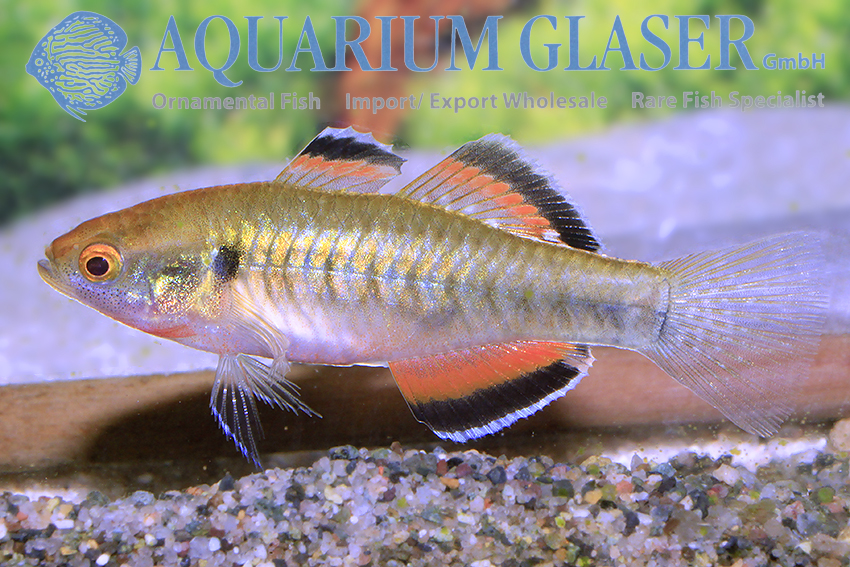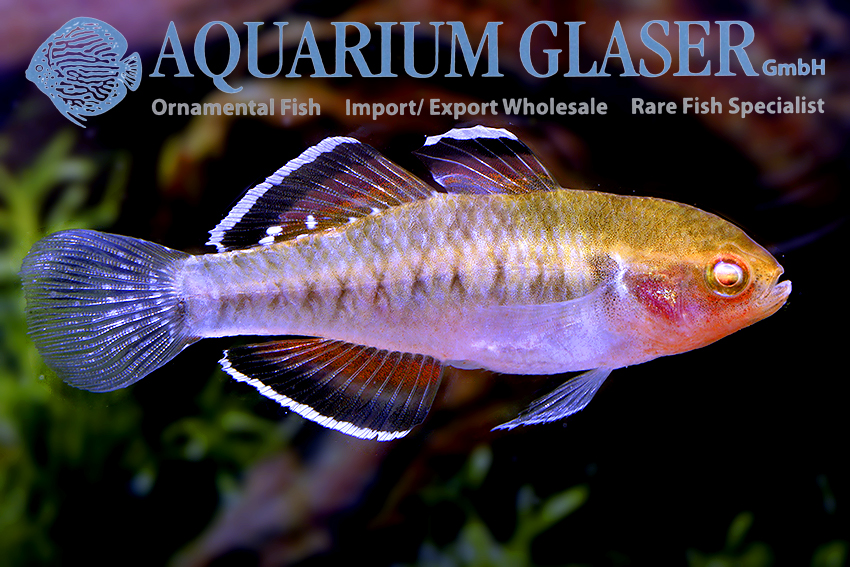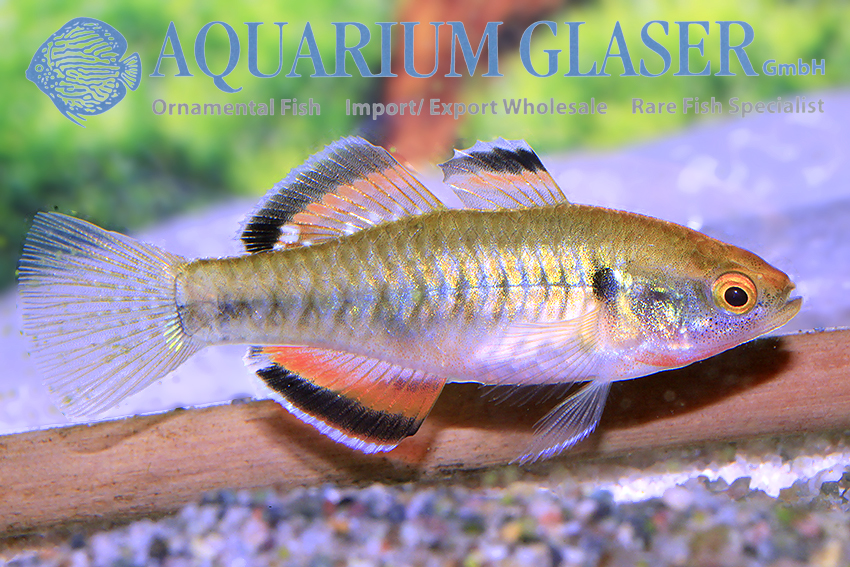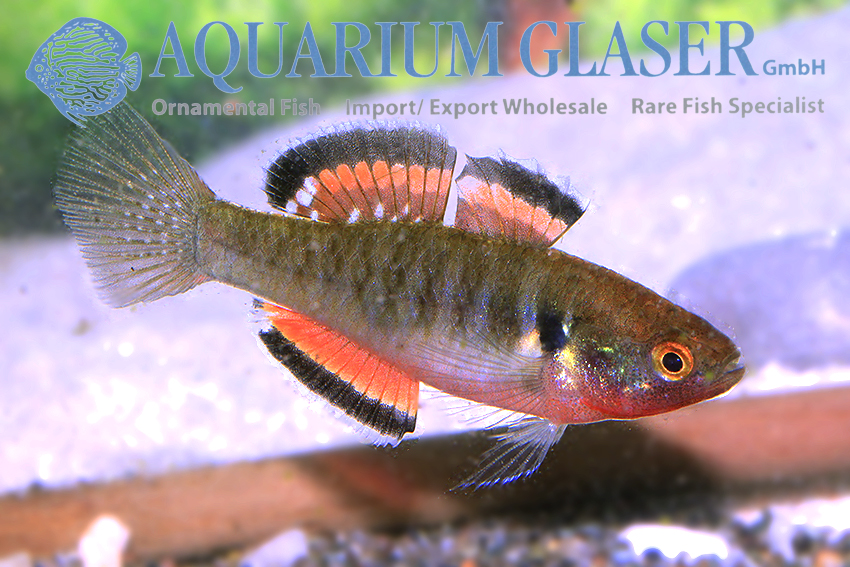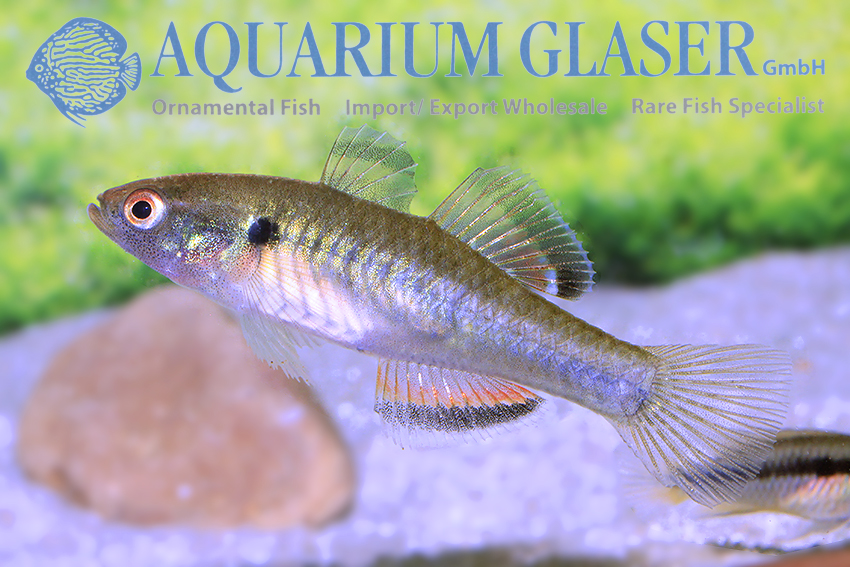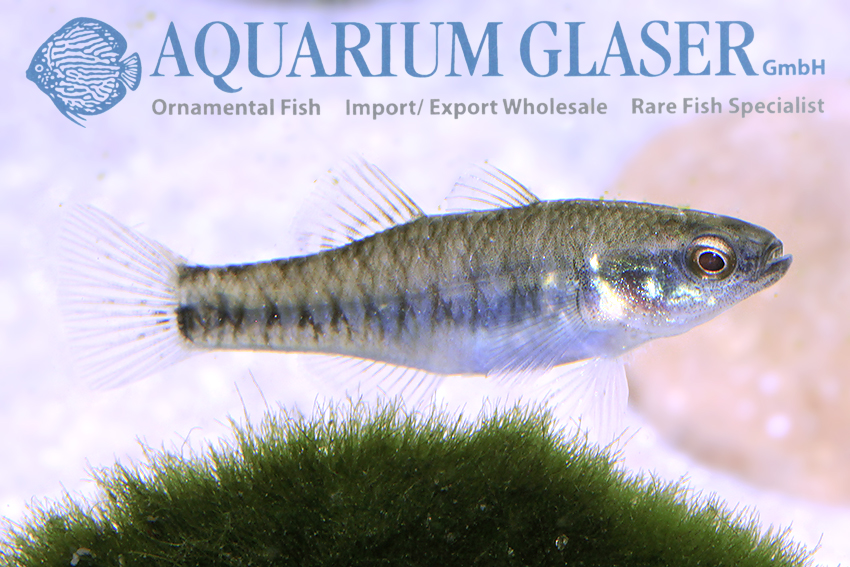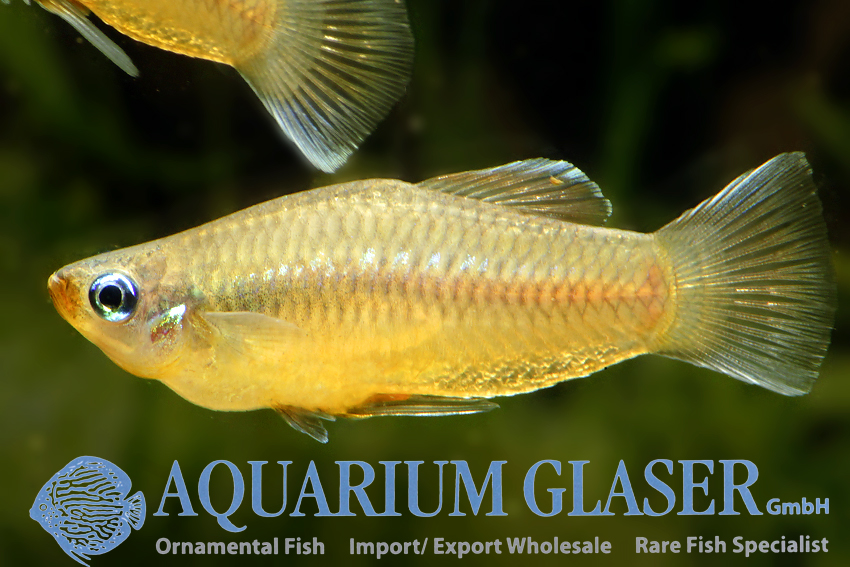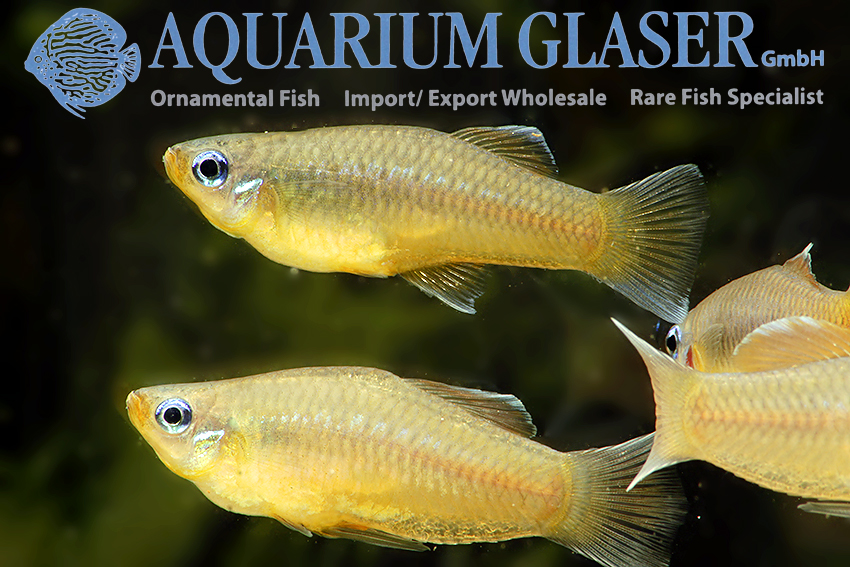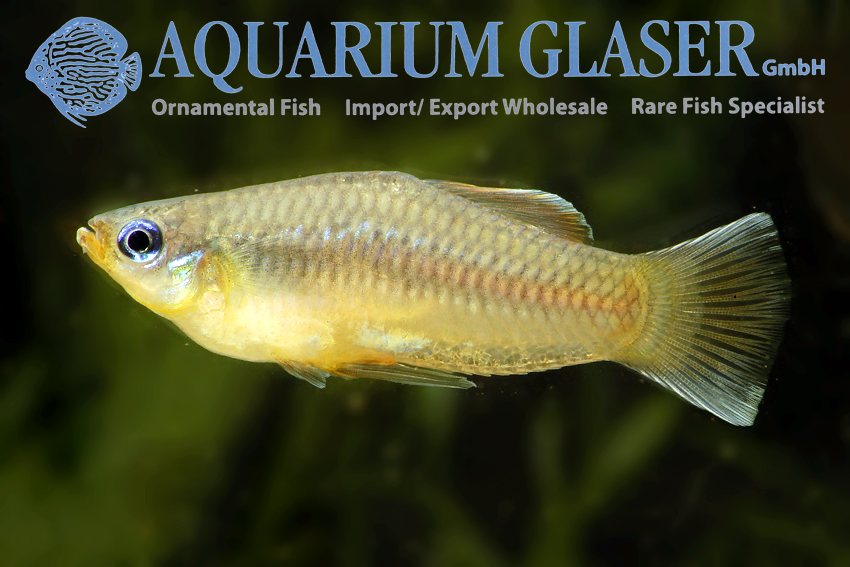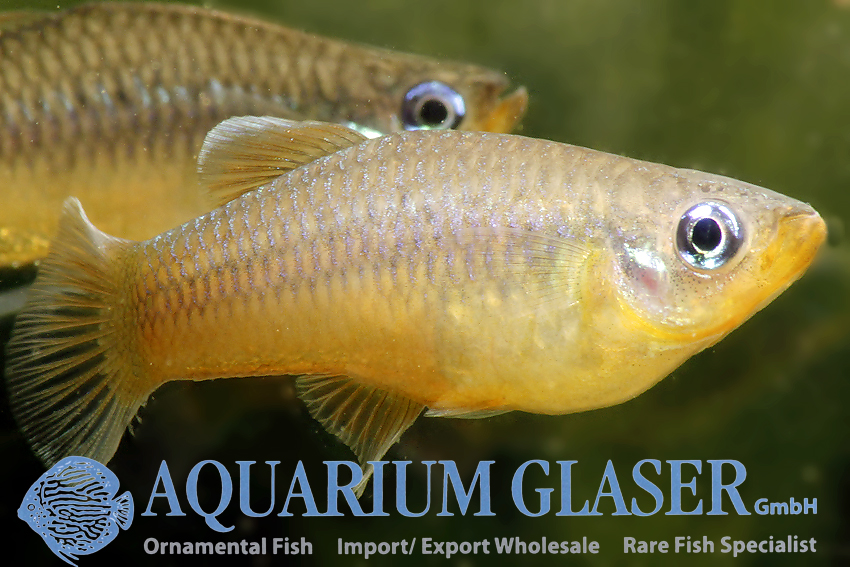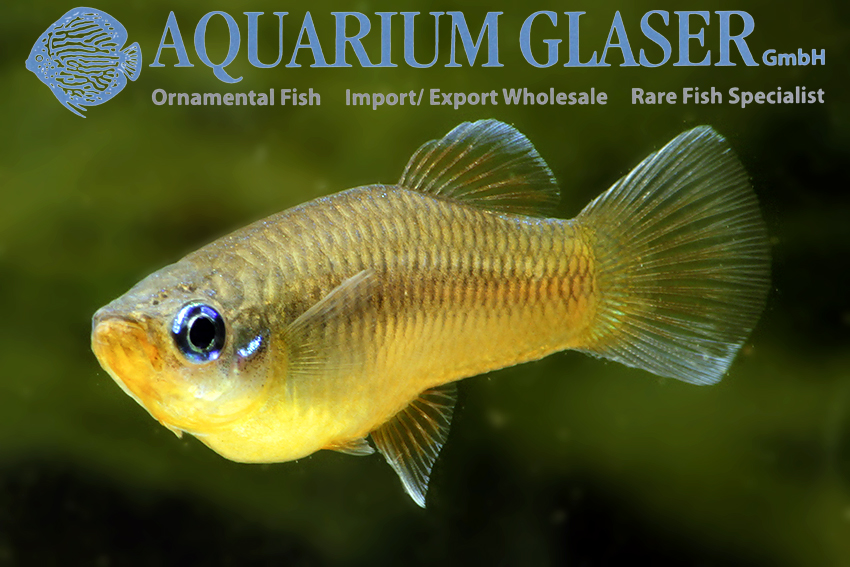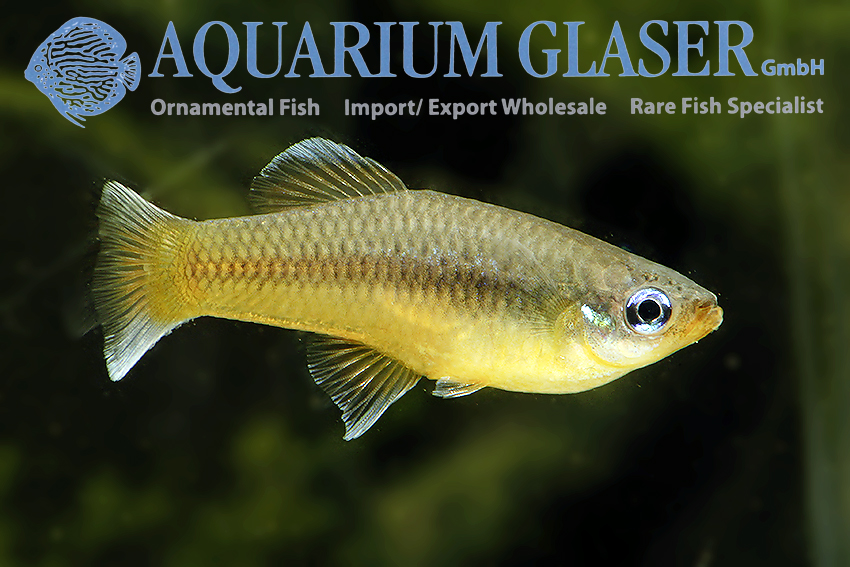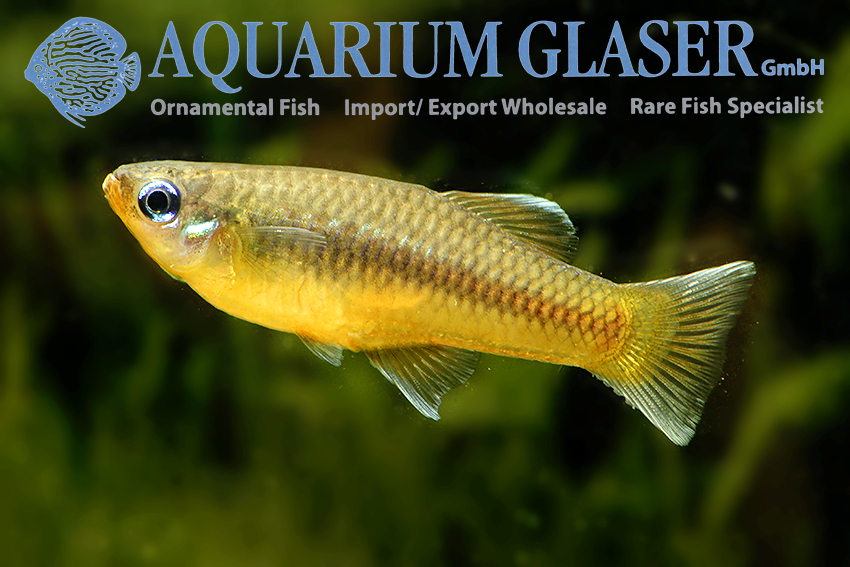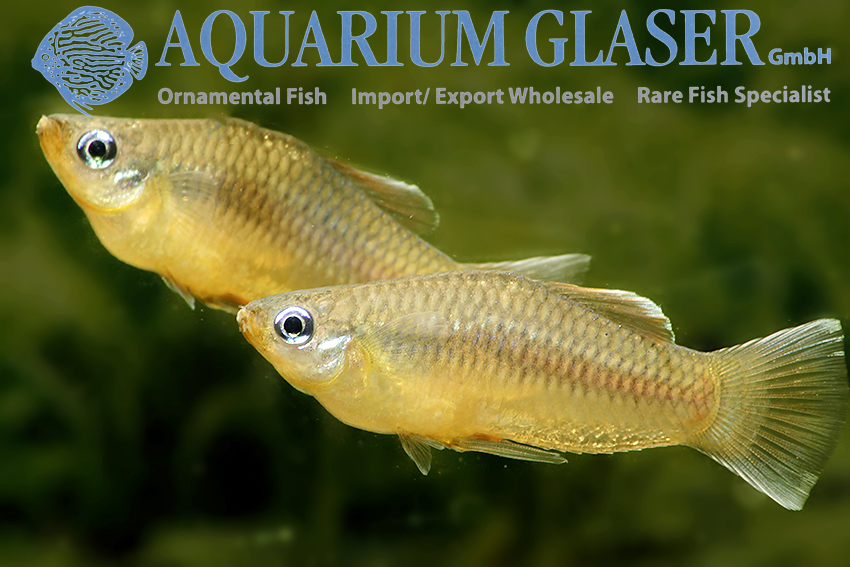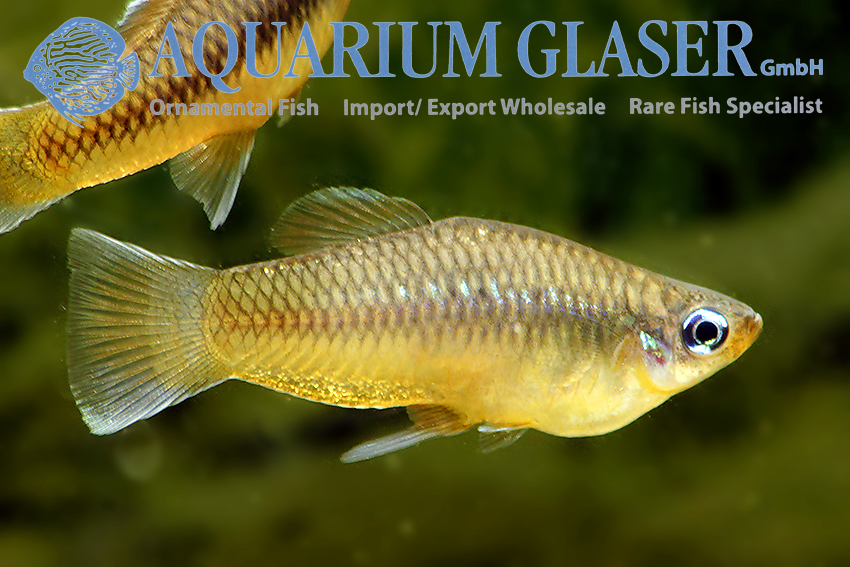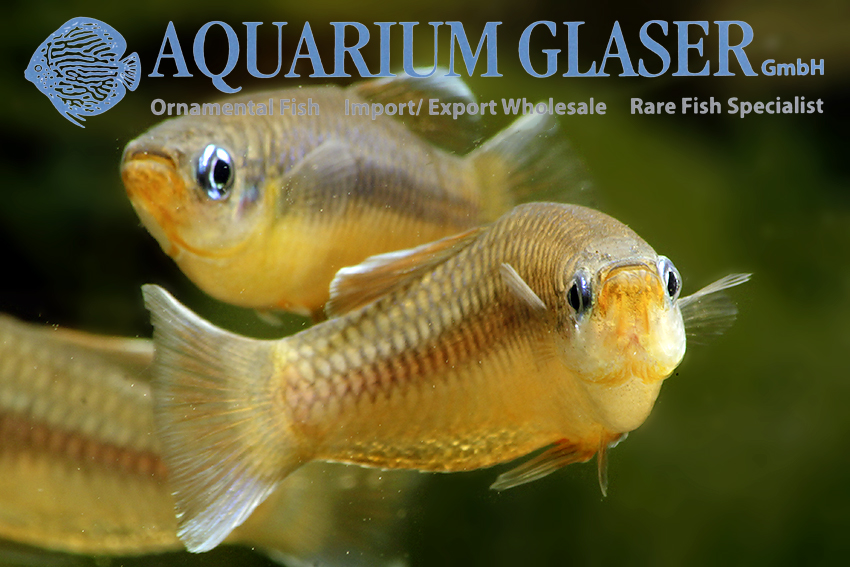Sometimes it happens that even we run short in finding superlatives: in any case this fish deserves to create one! It is so beautiful…. H. compressa is a sleeper goby that lives free swimming in the water column. In contrast to many other gobies this fish is not a bottom dweller. In Germany the genus Hypseleotris is called “minnow goby”, for the fish live like schooling minnows in the open water.
Males of this goby – it occurs in the wild in northern Australia and southern New Guinea – literally switch the light on while displaying. It is highly recommended to keep several males together in one tank, so at least one is in the mood to show the fantastic colours. The females are not so deep bodied and have a rather dull coloration.
Sadly it is very difficult to breed this fish under aquarium conditions. The fish spawn readily (they are substrate brooders), but the eggs and the fry are extremely small and the offspring is able to survive only in strong brackish or marine water. Here they can be fed with live marine plankton (for example oyster larvae).
On the other hand the fish are extremely hardy and undemanding. They tolerate temperatures between 18 and 35°C and almost any water chemestry. However, medium hard water will fit best.
For our customers: the fish have code 421682 on our stocklist. Please note that we exclusively supply the wholesale trade.
Lexicon: Hypseleotris: ancient Greek, means “deep Eleotris”; Eleotris is another genus of goby. compressa: Latin, means “compressed”.
Common name: Empire gudgeon
Text & Photos: Frank Schäfer
| Angaben zum Tier | |
|---|---|
| Herkunft | Indonesien / Indonesia |
| Verfügbare Größe in cm | 4 - 5 |





